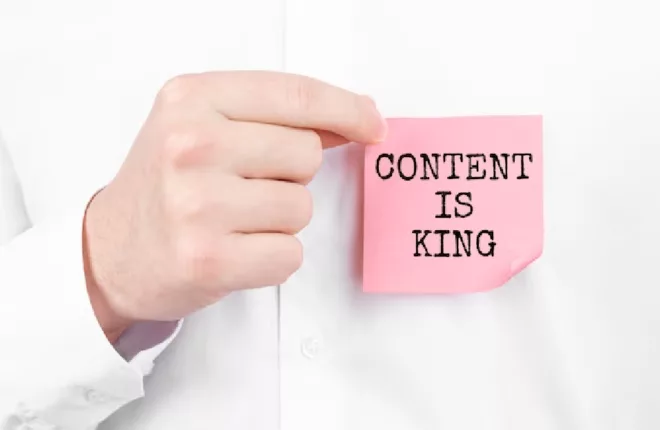Content is still king. Rising to the top of the search results or grabbing eyes on social media depends on having unique, interesting, helpful content. You want to hit the classic combination of educate, engage, and excite.
Easier said than done! “Just write good content” is like saying you just need to hit home runs to master playing baseball. Content creation takes practice, experimentation, and the understanding that sometimes your work simply isn’t going to land with your audience.
But, instead of taking the time to learn, coach ourselves, and think through new content approaches, we tend to keep swinging away, hoping the next piece will be the smash hit we want.
Even the best writers and creators can fall into ruts and become too focused on making more content (or bigger content) instead of better content. By intentionally creating a process that integrates your data and your ICP (ideal customer profile) into creativity, and sets aside space for analysis, you can put yourself on the path to making the impactful content possible for earning leads, not just views.
But before sharing how to have a center-brain style mindset for impactful content marketing, I want to review the big-picture challenges marketing content can fall into.
3 Content Challenges to Avoid
Ask your marketing team where they spend the majority of their time. They’ll most likely say “content creation.”
Why is that? We’re always in a cycle of need. We need to do more, complete more projects, share new messages, or address a new audience. There is always a need for content, and content is something you can control. Your team can’t control when someone will click on an email or fill out a form, but making a content piece is all on your end.
But, if we spend all of this time creating the content, we want to make sure it’s promoting the areas where we can grow the most. Content can end up being made purely for the sake of more content. Your team probably has a persona and goals in mind for each piece, but consideration of whether your approach is working can vanish as the content keeps needing to be pushed out.
When marketers jump the gun with content creation and burn out constantly doing the same type of work, they can easily fall into the trap of making content too broad, too narrow, or too boring.
Let’s see how we tend to fall when facing these three challenges.
Content is Too Broad
Going too broad is the trap of not remembering your target ICP audience and trying to address everyone who could use your product and solution. When you go too broad, you try to cover too much information and spread yourself too thin. A piece of content can even have decent traffic but not be engaging to your buying audience.
Imagine your ICP’s point of view. They go to Google or browse LinkedIn, looking for something helpful. They have specific questions they want answered. Using ourselves as an example, if someone wants to understand how buying intent data works, they won’t be interested in reading an article summarizing different data types. Give them the answer they’re searching for.
Content is Too Narrow
If you’ve gone too broad in the past, your team might be tempted to slingshot in the other direction and become too narrow with your content. If you are being too hyper-focused or if you are too fixated on one specific pain point or one specific audience, you could be spending too much time on content that won’t have an equivalent impact to the time spent.
Or, you could be immediately disqualifying a certain audience that could be a great untapped market. If you go too specific, you can write yourself into a corner where you’re covering the same ideas repeatedly. Don’t go so in the weeds that you’re answering a question that no one is asking or repeating the same answer over and over in your content.
Content is Too Boring
Both being too narrow and too broad can fall into the category of being too boring. This is content that people’s eyes glaze over when they see it. Maybe it’s too basic, and it’s been done to death. Maybe it’s not resonating with anyone. Maybe you’re just struggling to have any fresh creative energy.
Content can easily fall into being both boring and too big or too narrow. Let’s say the VP of Sales at a construction company is a target audience for you. Ask if that audience is big enough to be worth the content focus instead of prioritizing a different one (is it too narrow?). Or, even if it’s the right audience the content might only be addressing them superficially (too boring).
Marketing is a Center Brain Activity
Given enough time and editing, everyone can make a brilliant content piece. But, time is limited.
The trick to balancing fantastic content creation with your limited time is to remember marketing is, metaphorically, a center brain activity. You’re going to use both the left and right sides of your brain.
The left brain side is the analytical and technical piece that helps you be intentional in your work based on the data. It’s the part to help you know why you’re doing what you’re doing and what impact you’re having.
The right brain side is the creative part. It’s the part to inspire beautiful designs, unique messaging, and novel approaches to connect with your audience. Based on anecdotal feedback during our events and webinars, the creative side of marketing and content creation takes up the most time for your average marketer.
But it’s the interplay between both sides that makes you successful. Data analysis without action and experimentation won’t move the needle on leads. Content creation without targeting and analysis won’t have the best possible impact.
What Does a Center Brain Marketing Process Look Like?
Before you start playing around with ideas, your left side should analyze your ICP and lead definition if you haven’t already, so your team knows their audience and their goals for their content. Having a single lead definition across all your teams is essential for revenue growth, so start there if one isn’t in place.
Once marketing is confident in their target audience, they can get creative with branding, positioning, and fresh content using the right side of the brain. But, after they hit publish, don’t just jump into the next idea. The left side needs to come back in to measure results and optimize going forward.
Deciding on your target accounts and personas first helps funnel your creativity in the right direction. A creative moment can be fun and exciting for the marketing team, but not resonate with your audience. You have to stay true to what’s expected to have the biggest impact.
Likewise, you can’t spend all day reviewing analytics and building target account lists. You have to take action on your data. If you have the problem of content being produced too slowly, see what part of the creation process takes the most time. Pieces can easily get stuck in review and waiting for sign-off for months.
Your ICP decides where you should place your target. Make a list of your biggest audiences most likely to convert. That’s the starting point for all your content.
Next, your creativity (and maybe buyer intent data) makes the content relevant and exciting. After publishing, you review if your content successfully reached the target audience and pushed them down your funnel appropriately.
Success Comes from Learning
If a content piece doesn’t land like you hoped, the solution might not be to try again and hope it turns out better next time. Consider if you need to pull back time from content creation to help with the left side of the brain doing research and analysis. If your content fails to find your audience, should more effort be allocated to distributing the content you already have rather than making new content? Would a different format and channel work better for that audience?
Because you’ve taken time to make your content impactful and followed the process, even if a piece doesn’t work out as you imagined, your team hasn’t failed. No one wants to report bad news, so the review and analysis stage can be scary. Your team worked hard. Seeing that work did not have the ROI they wanted is difficult.
Hopefully, you have content that performs amazingly, and taking the time to analyze your success will let you copy the same messaging and ideas across your channels and teams. But, low-performing content should be an opportunity to readjust and learn.
Marketing is a cycle of analyzing, creating, and re-analyzing. You should always be learning. A content failure isn’t a failure if it informs your next piece and makes it a big success. You also don’t have to spend forever perfecting one piece of content because once it’s crafted and on target, you can release it and start seeing the results.
Remember, there’s no secret you can find in the data that won’t require testing with your audience and no piece of content that can’t be analyzed to improve your approach. Plan, create, publish, learn, repeat.
Summary
- Content is still king, but marketing teams can easily fall into the trap of making dull content as they try to make the next thing as fast as possible.
- To have impactful marketing content, your marketing team should use your ICP to create a priority target audience list and use your lead definition to know where they need to move a prospect down the funnel for the content to be successful.
- As long as you’re going after the right audience, get creative, take big swings, and experiment. But, don’t get bogged down in perfectionism.
- Review how your content performs and keep an open mind to changing target audiences, distribution channels, content formats, as well as general content quality.
- Your goal is for the marketing team to always be learning. Content marketing is a process, not a gamble.




